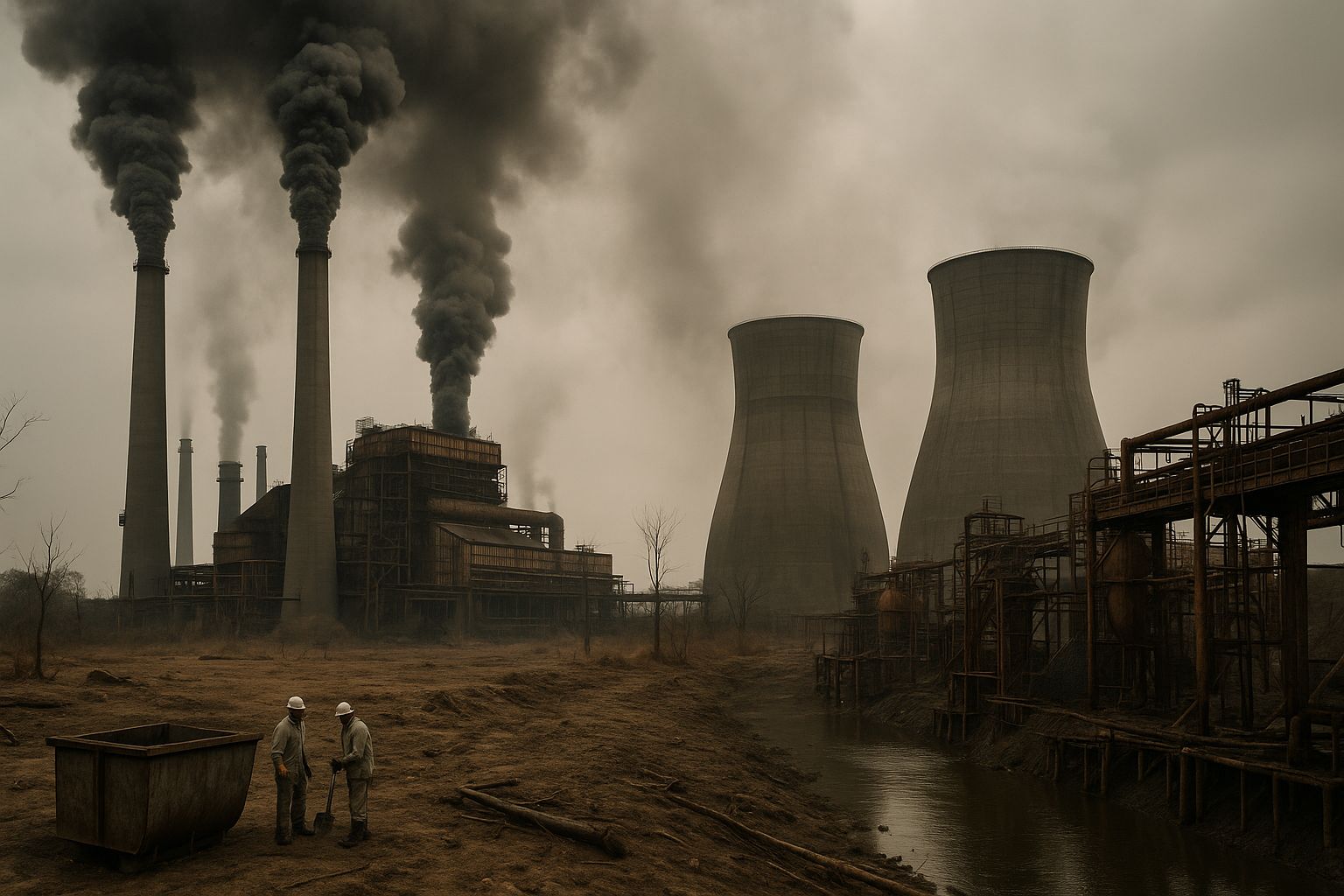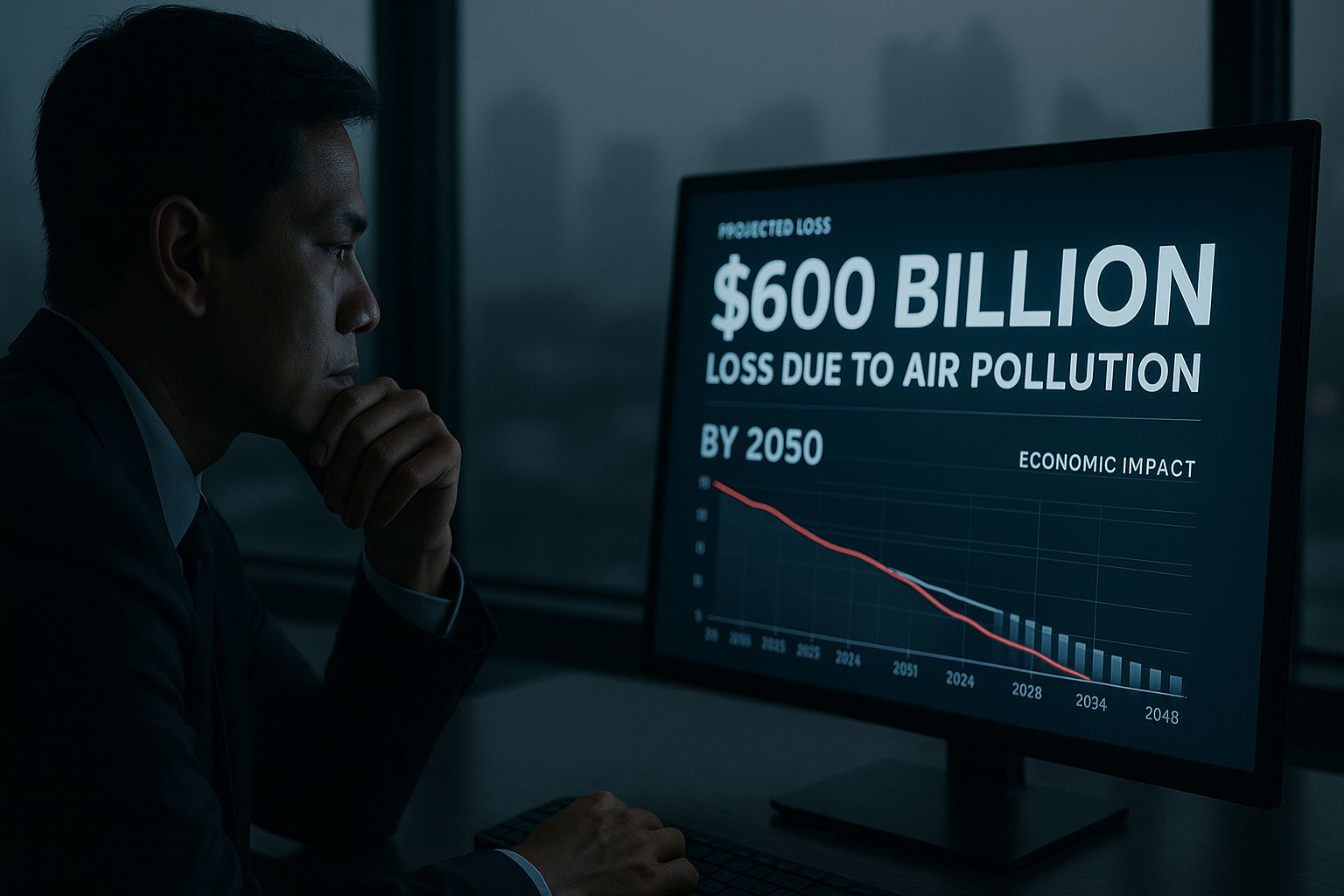- Green Glow
- Posts
- 🌱 Southeast Asia’s Air Pollution Crisis Could Cost $600 Billion by 2050 🔥💰
🌱 Southeast Asia’s Air Pollution Crisis Could Cost $600 Billion by 2050 🔥💰
Air pollution in Southeast Asia could cost the region nearly $600 billion by 2050, with pollution-linked deaths projected to rise by 10%. Learn what’s driving the crisis and how urgent action can turn the tide.
Air pollution is fast becoming one of Southeast Asia’s most devastating public health and economic challenges. A new analysis warns that the region’s worsening air quality could lead to hundreds of thousands of premature deaths and a staggering $600 billion in economic losses by 2050. As cities grow, industries expand, and vehicles multiply, the air that fuels daily life is turning toxic — exacting a silent but deadly toll on both people and prosperity.
Table of Contents

The Rising Human Cost
According to data cited by Fortune and supported by the Health Effects Institute and the Institute for Health Metrics and Evaluation, pollution-related deaths in Southeast Asia could increase by up to 10% by mid-century.
Fine particulate matter, known as PM2.5, is the main culprit. These microscopic particles penetrate deep into the lungs and bloodstream, causing respiratory infections, heart disease, strokes, and cancers.
Countries such as Indonesia, Vietnam, Thailand, and the Philippines are already seeing rising cases of chronic respiratory illnesses. Children and the elderly are particularly vulnerable, and the cumulative health burden is expected to grow dramatically if urgent mitigation is not implemented.
Economic Fallout: The $600 Billion Price Tag
The economic toll of air pollution is enormous. Lost productivity from illness and early deaths, higher healthcare expenses, and reduced workforce participation are estimated to cost nearly $600 billion across the region by 2050.
That’s equivalent to roughly 5–8% of Southeast Asia’s annual GDP, according to regional economists.
For nations still striving to expand their middle class and reduce poverty, this is a crippling blow. Dirty air doesn’t just damage lungs — it undermines education outcomes, deters foreign investment, and increases social inequality as poor communities bear the heaviest exposure.
What’s Driving the Pollution Crisis
Several interconnected forces fuel the region’s worsening air quality:
Coal and Fossil Fuels – Despite global decarbonization efforts, coal remains a major energy source in many Southeast Asian countries. Power plants continue to emit vast quantities of particulate matter and sulfur dioxide.
Rapid Urbanization – Explosive city growth has outpaced infrastructure development. Vehicle congestion, construction dust, and open burning compound the smog problem.
Agricultural Burning – Seasonal burning of crop residue and forest clearing in countries like Indonesia and Myanmar create transboundary haze that affects the entire region.
Weak Regulation – Enforcement of emission standards and pollution control remains inconsistent, with limited monitoring in rural and industrial areas.

Health and Environment: A Double Crisis
Air pollution doesn’t stop at human health — it also damages ecosystems and accelerates climate change. Pollutants such as black carbon trap heat in the atmosphere, worsening global warming. Crops and forests suffer, reducing agricultural yields and biodiversity.
This dangerous feedback loop means that pollution and climate change amplify each other, creating a twin crisis that threatens the region’s food security, clean water supplies, and long-term resilience.
Can Southeast Asia Turn the Tide?
Experts emphasize that the situation is dire but not irreversible. Several measures could significantly reduce deaths and economic losses:
Transition to renewable energy — Solar, wind, and hydropower investments are already growing but need stronger policy incentives.
Tighten vehicle emissions standards — Electrifying public transport and encouraging hybrid or EV adoption can drastically cut urban pollution.
Ban open burning and enforce air-quality laws — Regional cooperation through ASEAN is key to reducing cross-border haze.
Improve data and monitoring — Real-time air-quality data empowers communities and policymakers to take preventive action.
If implemented effectively, these steps could save millions of lives and billions of dollars — proving that clean air is both a moral and an economic imperative.
Global Lessons and Regional Leadership
Southeast Asia’s air crisis mirrors challenges faced by other developing regions. But by acting early, it can become a global model for sustainable growth.
Cities like Bangkok and Jakarta are already piloting air-quality management systems and public awareness campaigns. Scaling these successes region-wide could transform the narrative from despair to hope.

Conclusion
The findings are clear: if Southeast Asia fails to act, air pollution will continue to rob the region of its health, wealth, and future. The $600 billion forecast is more than an economic figure — it’s a wake-up call to protect the lungs of nations and the lives that depend on them.
A cleaner, healthier, and more resilient Southeast Asia is possible — but only if decisive action begins today.
FAQs
What is causing the rise in air pollution across Southeast Asia?
The main causes include heavy dependence on coal and fossil fuels, rapid urbanization, increasing vehicle emissions, industrial expansion, and agricultural burning. Weak enforcement of air-quality regulations also allows pollution to persist unchecked.
How many people could die from air pollution in Southeast Asia by 2050?
Reports estimate that pollution-related deaths could rise by around 10 percent by 2050, claiming hundreds of thousands of additional lives each year if current trends continue.
Why could air pollution cost the region $600 billion?
The $600 billion figure represents projected economic losses from health-care costs, lost productivity, premature deaths, and damage to agriculture and ecosystems. This loss is equivalent to roughly 5–8 percent of the region’s annual GDP.
Which countries in Southeast Asia are most affected?
The hardest-hit nations include Indonesia, Vietnam, Thailand, the Philippines, and Malaysia—countries where urban density, industrial emissions, and seasonal forest fires create persistent haze and smog problems.
What can governments and citizens do to reduce air pollution?
Governments can enforce stricter emission standards, promote renewable energy, and ban open burning. Citizens can help by reducing car use, supporting clean-energy policies, and monitoring air quality to demand accountability.
You May Also Like
🌱 How China’s Tourism Industry Is Embracing Renewable Energy to Go Green ✈️🌍
🌱 Extreme Heat is Coming for Our Kids—Will We Act in Time? 🔥⚠️
🌱 The Climate Paradox: How Drought Is Lifting South Africa's Coastline 🌦️🌵
🌱 Why $2.5 Billion Says the U.S. Can’t Quit Clean Energy 💰♻️
🌱 Did Renewable Energy Trigger Spain’s Blackout? A Closer Look at the Grid ⚠️🔌
External Links
Coweta teen to speak at State Capitol in support of water pollution clean-up day
AI, machine learning to be deployed in fight air, water, noise pollution in Delhi
Air Quality Alert for Mother's Day: Elevated levels of Ozone pollution
Air pollution still plagues nearly half of Americans. That does a number on our health
Follow Us:
X: https://www.x.com/greenglownews
Youtube: https://www.youtube.com/@greenglownews
Instagram: https://www.instagram.com/greenglownews
Sponsored Links